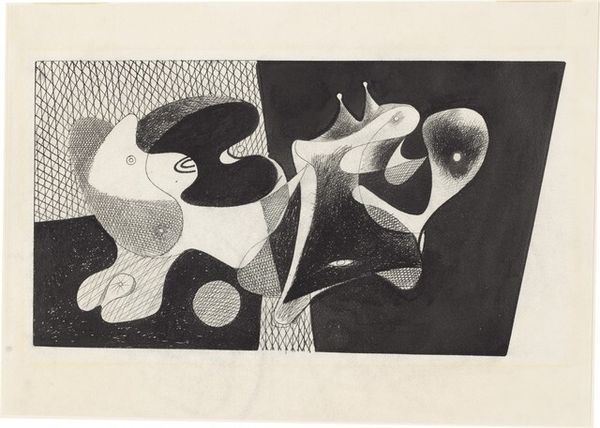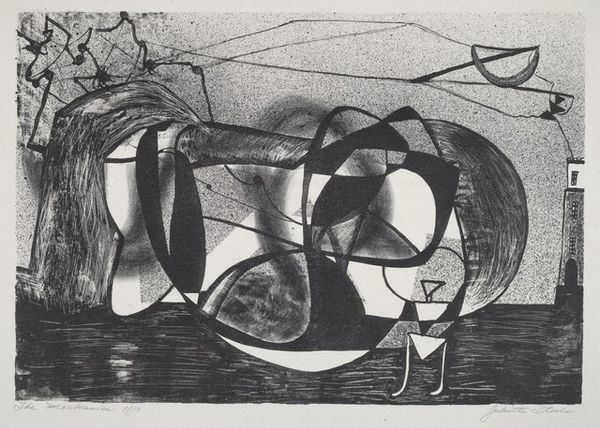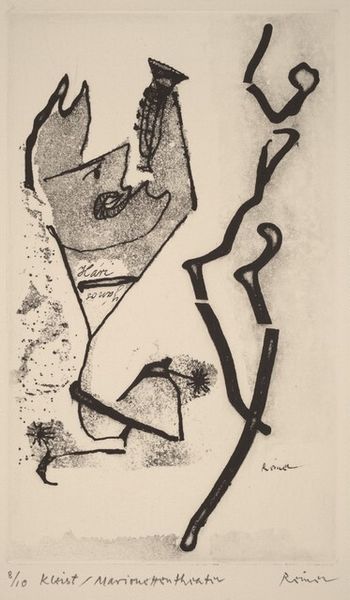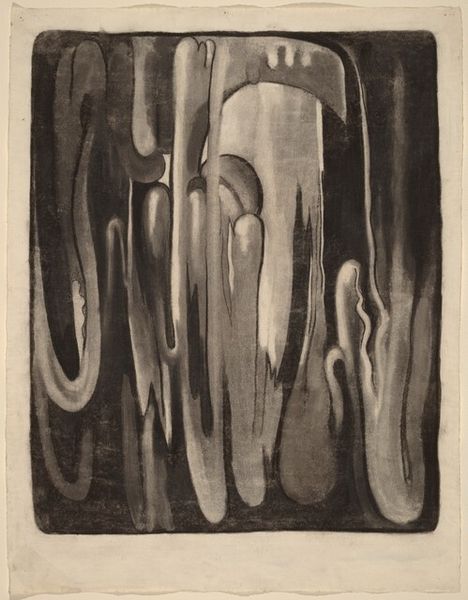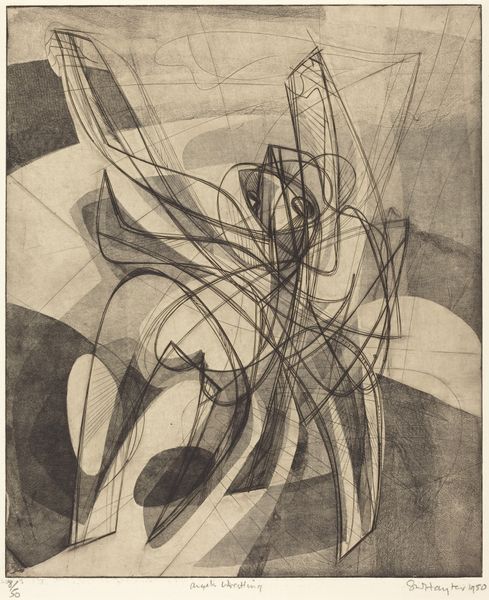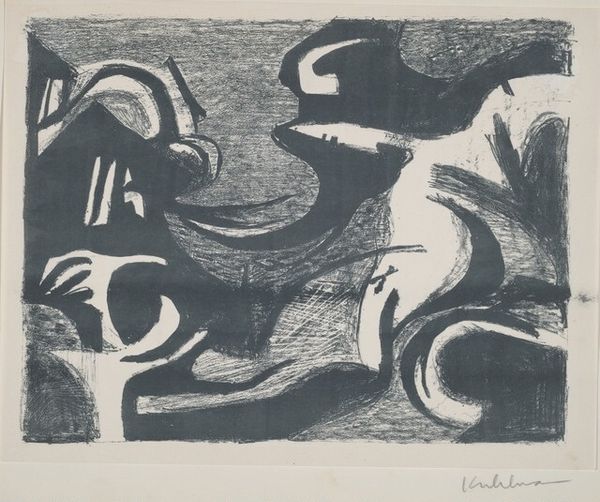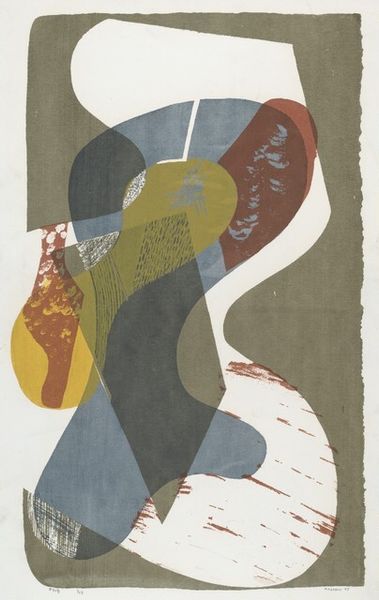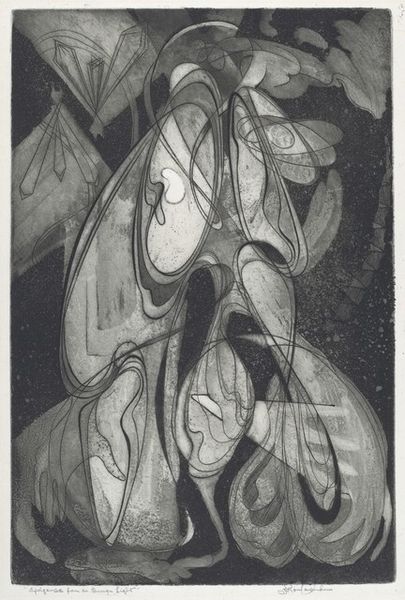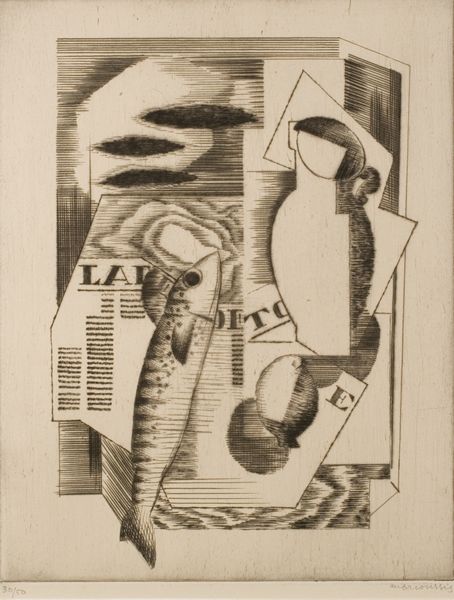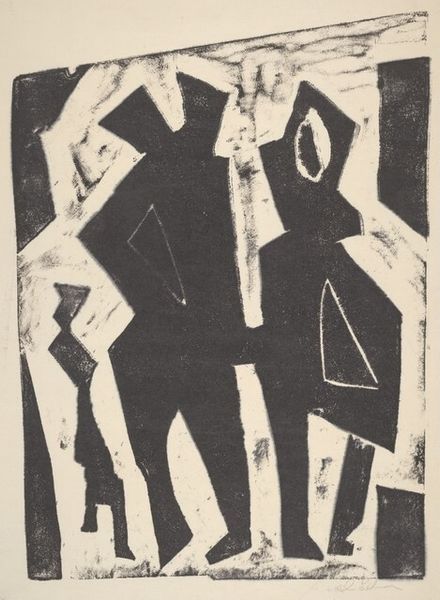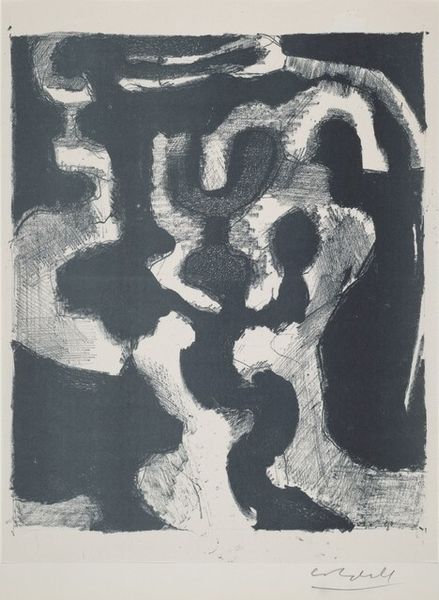
print, engraving
# print
#
caricature
#
caricature
#
figuration
#
abstraction
#
history-painting
#
engraving
#
modernism
Copyright: National Gallery of Art: CC0 1.0
Editor: So, this is André Racz's "Perseus Beheading Medusa, II," created in 1944, using engraving as a medium. It feels incredibly symbolic, even unsettling, with the stark contrasts and abstracted forms. How do you interpret this work? Curator: Well, consider how Racz is reimagining the ancient myth. The black and white are potent; it isn't merely about rendering light and shadow, is it? It speaks to a deeper, more binary understanding of morality – good versus evil. What emotions arise as you look at the stark rendering? Editor: A sense of stark violence, definitely, but also...almost ritualistic, as if the act has a weight beyond just the literal beheading. Curator: Precisely! That's where the power of visual symbolism comes in. Notice how Perseus isn’t presented as a triumphant hero. He's almost skeletal, robotic, perhaps suggesting the dehumanizing effects of violence, of war itself. Think about the context: 1944. What would the contemporary viewers think of the skeletal figure of the Greek hero? Editor: So, Medusa's head becomes more than just a trophy? A burden, perhaps? The almost cartoonish aesthetic feels like a commentary on trauma… it's memorable in its caricature. Curator: Indeed. This distortion amplifies the horror while distancing us from the immediate gore. In art, grotesque imagery becomes a container for society's anxiety; the fears that hide just beneath the surface become unmasked by symbolic representation. How else does that symbolism reveal itself? Editor: That's fascinating. I hadn't considered the work in the context of World War II. I thought about classical antiquity, but in times of conflict a classical image becomes highly significant as the return to a historic "Golden Age". The engraving process also adds a layer of rawness... I initially read it as stylistic...now I understand the psychological impact. Curator: That's precisely why icons possess power beyond the immediately visible. They are containers for cultural memory, inviting us to see anew. Editor: I'll definitely think about that going forward, understanding those embedded layers of meaning and symbolism. Thank you!
Comments
No comments
Be the first to comment and join the conversation on the ultimate creative platform.
